 Respect Food – Tips
Respect Food – Tips
Did you know that about 40% of all food ready for harvest in the U.S. never makes it to a table? A lot of this waste occurs before the food ever comes to the table, but we can do our part by taking pains to carefully preserve our food, creatively make over the leftovers, and of course, eating all our spinach!
Heed the Food Recovery Pyramid
The Food Recovery Hierarchy is a good reminder of how to prioritize food waste solutions. Most of our tips fall under the first category of Source Reduction, i.e., preventing food waste before it’s created. Any extra edible food should go to hungry people, then to animals. If food waste cannot be avoided it should be converted to energy or composted, and only as a last resort should it go to the landfill.
SOURCE REDUCE
Shop Smart
Instead of filling up your fridge with groceries for a week’s worth of meals, think about what you want to eat during the next 1-2 days and just get the groceries you need. It saves you money and prevents food from going to waste. And by all means, don’t shop hungry — or risk buying more food than you really need. Check out this guest post from King County’s Chef Jackie Freeman for smart shopping tips.
Learn How to Read Expiration Dates
A ‘Sell-By’ date, a ‘Best if Used By’ date, and ‘Use-By’ date all have different meanings. The important label is the ‘Best if Used By’ date. This is NOT a safety date — it is simply suggesting when the quality and flavor of the product will be at its best. So by all means, eat away and discard no food before its time is really up. To learn more about how to read and understand food dating, visit the USDA Food Safety and Inspection Service webpage.
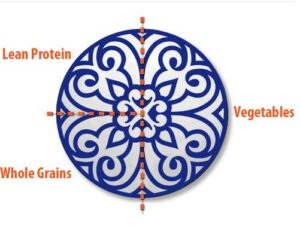
These Sage & Slim plates hide portion sizes in their design. (Image: treehugger.com)
Practice Portion Control
Think modern restaurant portions are much too large? When you are eating out in a restaurant, consider dividing your food up when it arrives and saving half to take home. Whether it’s half, or even less, make sure to take a doggie or to-go bag, and let the waiter know if you think they are packaged in too much packaging.
Practice better portion control at home with help from Sage & Slim plates. This innovative plate is designed smaller so you won’t pile huge portions onto your plates. The plate pattern can also be used to help you balance portions of different food groups.
Keep It Fresher Longer
Grab a Debbie Meyers Green Bag, a Rubbermaid Produce Saver or Tupperware container, or even look into vacuum packaging your meals to keep leftovers fresh for as long as possible. Of course, don’t forget the freezer, but be sure to wrap properly to avoid freezer burn.
EAT EVERYTHING
Find Out What You Waste
Keep a daily food diary. This is just one tip passed along by the Emma Marsh, the leading food waste advocate in the UK. Read Emma’s story and learn more about her movement, in her post, Farmer’s Daughter on a Mission to Eradicate Food Waste
Salvage Your Supper
Limp carrots, sprouted onion, funny shaped potatoes, wrinkly peppers and fruit with blemished skin can all be eaten and still taste great!
Don’t throw these perfectly good food items away just because of how they look. And next time you buy broccoli, try eating the stalk as well as the florets – it tastes the same and is packed with nutrition. Plus, carrot greens can be chopped up and eaten too; they taste just like parsley. To learn more about how to salvage your supper and eat everything, check out our story on the Salvage Supperclub and watch the video “Eat Everything” by Josh Treuhaft, a member of the WeHateToWaste community.
Empty the Fridge Before Heading Off to Vacation
When planning a trip you probably make all of the usual preparations — putting a hold on the mail, setting the light timers, and providing for the cat, but what about emptying your fridge so no perishables spoil in your absence? Counting down about a week before, use the tips shared by Dana Gunders of the NRDC in this post, The Pre-Vacation Race to Empty Your Refrigerator to clean out your fridge before you head out.

This lettuce soup was made with a recipe from world renowned chef, Emeril Lagasse (Credit: Food Network)
Love Your Leftovers
Don’t discard dinner remains. Under the thoughtful guidance of our ‘Leftover Queen’ Waste Watcher Jocelyn Deprez, leftovers can have a makeover! Check out her book, The Refrigerator Files, that’s jam-packed with recipes for turning last night’s leftovers into tonight’s gourmet entrées. Follow her recipes on our blog — Jacquie’s favorite: When Life Gives You Lobster Shells, Make Lobster Bisque. Check out the U.K. website Love Food Hate Waste for other creative ways to make all your food last.

“Leave the gun, take the cannoli” is a famed line from the movie, “The Godfather” (Image: Marcelo Clapp)
Order Once, Eat Twice
Don’t leave that extra food on the restaurant table; ask for a doggie or to-go bag instead. You can make two meals out of one! While you’re at it, why not ask the waiter to pack the Dashboard breadbasket, too? Read more about that in Fredrica’s post Leave the Gun, Take the Cannoli…and the Bread Basket!
While you’re at it, try to patronize restaurants with ‘greener’ doggie bags, e.g., recyclable, reusable, compostabe, minimal packaging. Better yet, bring your own container to the restaurant like Fredrica in The Future of Doggie Bags.
Dumpster Dive!
No kidding! Dumpster dive for dinner. Check out Rob Greenfield’s tips for making gourmet meals from food that’s been diverted from landfills in his post, “How I Went From Normal Dude to Dumpster Diving Across America”
FEED HUNGRY PEOPLE
Share Your Food
Do it like our ‘Junky’ Jacquie who shares her big bag of Clementines with neighbors in her apartment building. Or bring the desire to respect food to the next level and join a food-sharing co-op or program in your community like the Food Swap Network. This is a great opportunity to get rid of food that you would otherwise throw away (e.g., before going on a vacation), get to know new culinary delights and meet great new people!
Nadine reports that in Germany the director of the documentary, Taste the Waste is creating food sharing platform where private households as well as restaurants, bakeries, supermarkets etc. can share the food that would be thrown away even though it’s still perfectly fine to eat.
Redistribute Food
Show your respect for food by supporting groups such as City Harvest, a non-profit that keeps New York City from going hungry. It redistributes food from restaurants, events, grocers, farms, and many other places. If City Harvest can do it, then you can do it too. Got a doggie bag you don’t really need? Pass it along to a homeless person who might really enjoy it.
For those of you on the West Coast, check out San Francisco based FoodShift, a unique food recovery group. Find out if your town has a food redistribution program and help out!
Moving? Donate Food
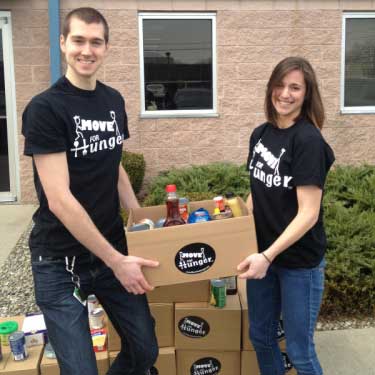
The Move For Hunger team make it easy for your unwanted food to get to a local food bank (Image: Move For Hunger)
Pass along the uneaten food in the pantry on moving day. Why ditch perfectly edible canned and other packaged foods? Learn how to work with organizations like Move For Hunger and socially responsible moving companies and realtors in Dan Ratner’s post, Move for Hunger
FEED ANIMALS
Feed Animals
All the way back in 2007, Rutgers University started a program to divert the food scraps from the cafeteria to local farms. The food scraps are used as feed for livestock. By feeding animals leftover scraps, farmers have more land to glean crops for sale, rather than using them to feed animals. This partnership also saved Rutgers’ Dining Services over $100,000 in hauling costs for food waste and prevent tons of food from going to a landfill.
The New York Times recently featured an article on chickens that eat the food scraps from four-star NYC restaurants. The idea behind this endeavor is to produce tastier chickens, but it also helps divert a whole lot of food waste while doing it!
INDUSTRIAL USES
Recycle Cooking Oil
Fats, Oils, and Grease (FOG) derived from meat products can be rendered into biofuels. In Europe, more than 80% of the cooking oil used by McDonald’s is being converted into biofuels.
Biodiesel programs are becoming more and more common among colleges and universities. Dickinson College boasts a student-run biodiesel shop and uses their products in school vans.
COMPOSTING
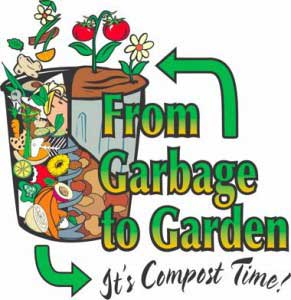
(Image: Frederick County, MD)
Compost
NYC is just starting a composting program, and Seattle and San Francisco are already immersed in the dirt because it makes sense. With food waste making up the largest percent (21%) of waste going into municipal landfills (EPA 2011), composting can not only reduce greenhouse gas emissions from landfills, but it can put good nutrients back in the ground that our food came from. Check out these tips too.

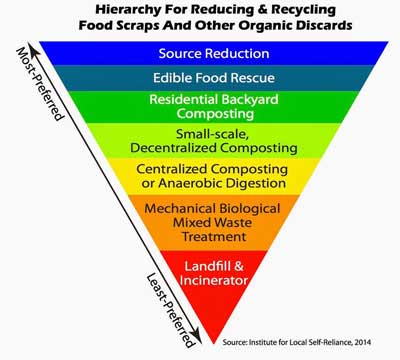
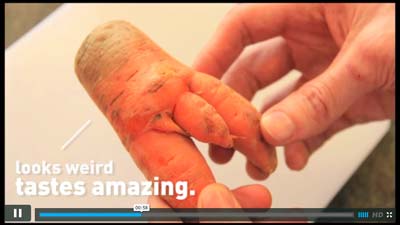


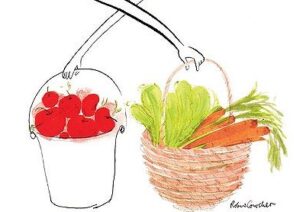
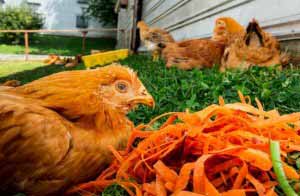
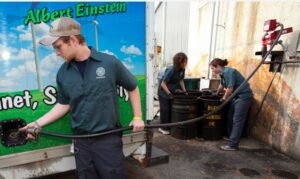
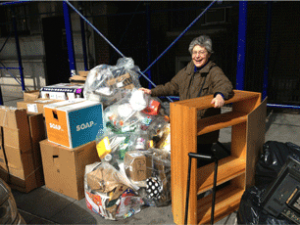


Pingback: Grocery Shopping Savvy for Safety and Value while Reducing Waste | Just Dish – A Just BARE Blog
Pingback: Tips to Reduce Waste | AP Environmental Science
Would you like to share your experience or thoughts? Leave a comment!
Pingback: Eat Drink Better | Healthy recipes, good food: sustainable eats for a healthy lifestyle!
Another great tip for reducing food waste is in food prep! Instead of throwing away or composting the peel of potatoes and carrots, scrub down the skin with a vegetable brush to get rid of excess dirt. This way, you get all the veggies’ nutritive properties and that healthy fiber.
Awesome tips for reducing and preventing food waste! I am very glad that recently there are such campaigns for donating food, which is really great idea to give you food to someone who really needs it instead of throwing it away. Greetings
Awesome post keep posting. I Just loved it. It’s very interesting thanks for sharing such knowledgable information
Such a great article. I love this. Keep up the good work!!